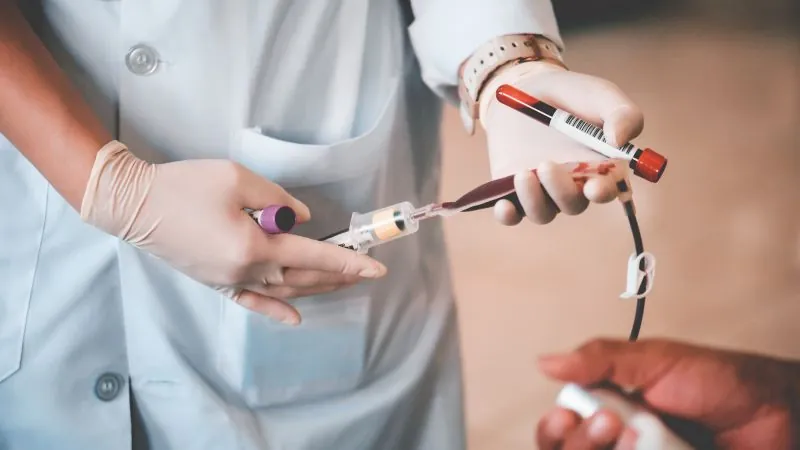
Are You Iron Deficient? Shocking Study Reveals Alarming Statistics!
2024-09-27
Introduction
You might be suffering from an iron deficiency without even realizing it! A startling new study finds that nearly 1 in 3 adults in the United States could be dealing with one of two types of iron deficiency, despite not exhibiting symptoms typically associated with conditions like anemia, heart failure, or chronic kidney disease.
Study Findings
Published in the JAMA Network Open, this eye-opening research suggests that iron deficiency may be a "widespread" and "underrecognized" health crisis across the nation. Of the adults studied, approximately 14% were determined to have absolute iron deficiency, which indicates a significant reduction or total lack of iron reserves in the body. In addition, around 15% suffered from functional iron deficiency, a condition where iron stores are sufficient but not adequately utilized by the body.
Impact on Health
Dr. Leo Buckley, the study's lead author, emphasizes the importance of understanding these distinctions, noting that functional iron deficiency is alarmingly common among all ages and genders. He points out that prevalent conditions like obesity, diabetes, and kidney disease often lead to this type of deficiency.
Older populations are particularly vulnerable. The study shows that absolute iron deficiency predominantly affects pre-menopausal women and older adults—both men and women—who may be more likely to experience unknown blood loss or inadequate iron intake due to chronic health issues. Iron is crucial for sustaining numerous body functions, notably the production of hemoglobin in red blood cells. Deficiencies can manifest as restless leg syndrome, fatigue, hair loss, and even more serious outcomes like heart failure.
At-Risk Demographics
Certain demographics, including menstruating women, pregnant individuals, children, vegetarians, and frequent blood donors, are at heightened risk. Alarming estimates indicate that over 70% of iron deficiency cases may remain undiagnosed among children and pregnant women.
Management and Prevention
Fortunately, iron deficiency can often be managed with a combination of iron supplements and dietary changes. Incorporating iron-rich foods such as lean meats, seafood, nuts, beans, lentils, and leafy greens like spinach can significantly help. However, many individuals may remain unaware of their deficiency, leading to serious health complications over time.
Research Methodology
Researchers from Brigham and Women’s Hospital and other notable institutions conducted a detailed analysis involving 8,021 American adults, utilizing data from the National Health and Nutritional Examination Survey, which included blood test evaluations from 2017 to 2020.
Prevalence of Iron Deficiency
Among adults not actively monitored for iron deficiency, the estimated prevalence of absolute deficiency stood at around 11%, with functional deficiency at 15%. Alarmingly, only about one-third of those identified with absolute iron deficiency had a documented reason for screening. This indicates a significant gap in preventative healthcare practices, as many individuals may never receive necessary screenings unless they advocate for it themselves.
Iron Supplements Usage
The study uncovered a concerning trend: the use of iron supplements among those diagnosed with iron deficiency is minimal—just 35% of affected women and 18% of men reported taking them. Dr. Jacob Cogan, another expert in the field, echoed the sentiment that iron deficiency is likely more common than known, especially since symptoms can be subtle and easily overlooked.
Conclusion
So, if you suspect that you might be among those silently grappling with iron deficiency, don't wait for your next routine check-up! Consult your healthcare provider about getting your iron levels tested and consider making dietary adjustments to improve your iron intake. Remember, a proactive approach could safeguard your health and help you avoid serious complications down the line.


 Brasil (PT)
Brasil (PT)
 Canada (EN)
Canada (EN)
 Chile (ES)
Chile (ES)
 España (ES)
España (ES)
 France (FR)
France (FR)
 Hong Kong (EN)
Hong Kong (EN)
 Italia (IT)
Italia (IT)
 日本 (JA)
日本 (JA)
 Magyarország (HU)
Magyarország (HU)
 Norge (NO)
Norge (NO)
 Polska (PL)
Polska (PL)
 Schweiz (DE)
Schweiz (DE)
 Singapore (EN)
Singapore (EN)
 Sverige (SV)
Sverige (SV)
 Suomi (FI)
Suomi (FI)
 Türkiye (TR)
Türkiye (TR)